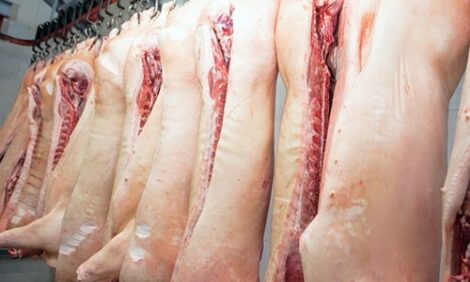COOL Cost Estimates Questioned
US - The U.S. Department of Agriculture's (USDA) initial estimate of implementing a national country-of-origin labeling system for red meats, fresh fruits and vegetables, fish and peanuts is "grossly over-inflated"...
|
Need a Product or service?
|
|
...and may endanger the law's implementation, Rep. Mary Bono, R-Calif., and 35 additional House members wrote Agriculture Secretary Ann Veneman last week, reports DTN.
Bono was the co-author with Rep. Darlene Hooley, D-Ore., of the initial country-of-origin labeling amendment to the House version of the 2002 farm bill. The Bono-Hooley amendment, which applied to fresh fruits and vegetables at the final retail point of sale, passed 196 to 121. The Senate added the meat, fish and peanuts provisions. Other House members signing the letter included Rep. Earl Pomeroy, D-N.D., Rep. George Miller, D-Calif., Martin Frost, D-Texas, Rep. Rep. Betty McCollum, D-Minn., Rep. Mark Foley, R-Fla., Katherine Harris, R-Fla. and Tom Udall, D-N.Mex.
In November, the USDA filed a Federal Register notice that full implementation of the initial voluntary stage of the program would cost $1.97 billion per year to implement, including the costs to producers. Farm leaders believe the USDA's statement on the cost of the voluntary program provides an idea of how much USDA officials believe the mandatory program would cost. Bono and her colleagues wrote "Not only does USDA fail to account for origin labeling already required in several states, but it factors in costs for regulations currently mandated by USDA itself. For instance, USDA includes in this cost estimate mandatory record keeping when it already requires industry participants to keep sales records for two years. These same regulations would satisfy the COOL guidelines or could be easily altered to do so. We believe a more thorough examination of actual COOL implementation in states like Florida provide a more valid cost-estimate model.
In the state of Florida, implementation costs range from only one to two man-hours of work per store per week. As this program has been in effect for over twenty years, we believe this to be a very reliable model. In addition, the USDA's very own Food Safety and Inspection Service (FSIS) suggested that additional costs for country-of-origin labeling "may not exceed what is now being spent on federal inspection." Bono and her colleagues also wrote they are "concerned" that "the guidelines do not require the label to list the actual percentage of weight for each constituent ingredient. We believe that unless the package contains an actual percentage of weight or the label directly states that countries appear in the order of having the most ingredients in the package, consumers will still not be aware of what they are purchasing."
Source: National Pork Producers Council - 10th February 2003

















